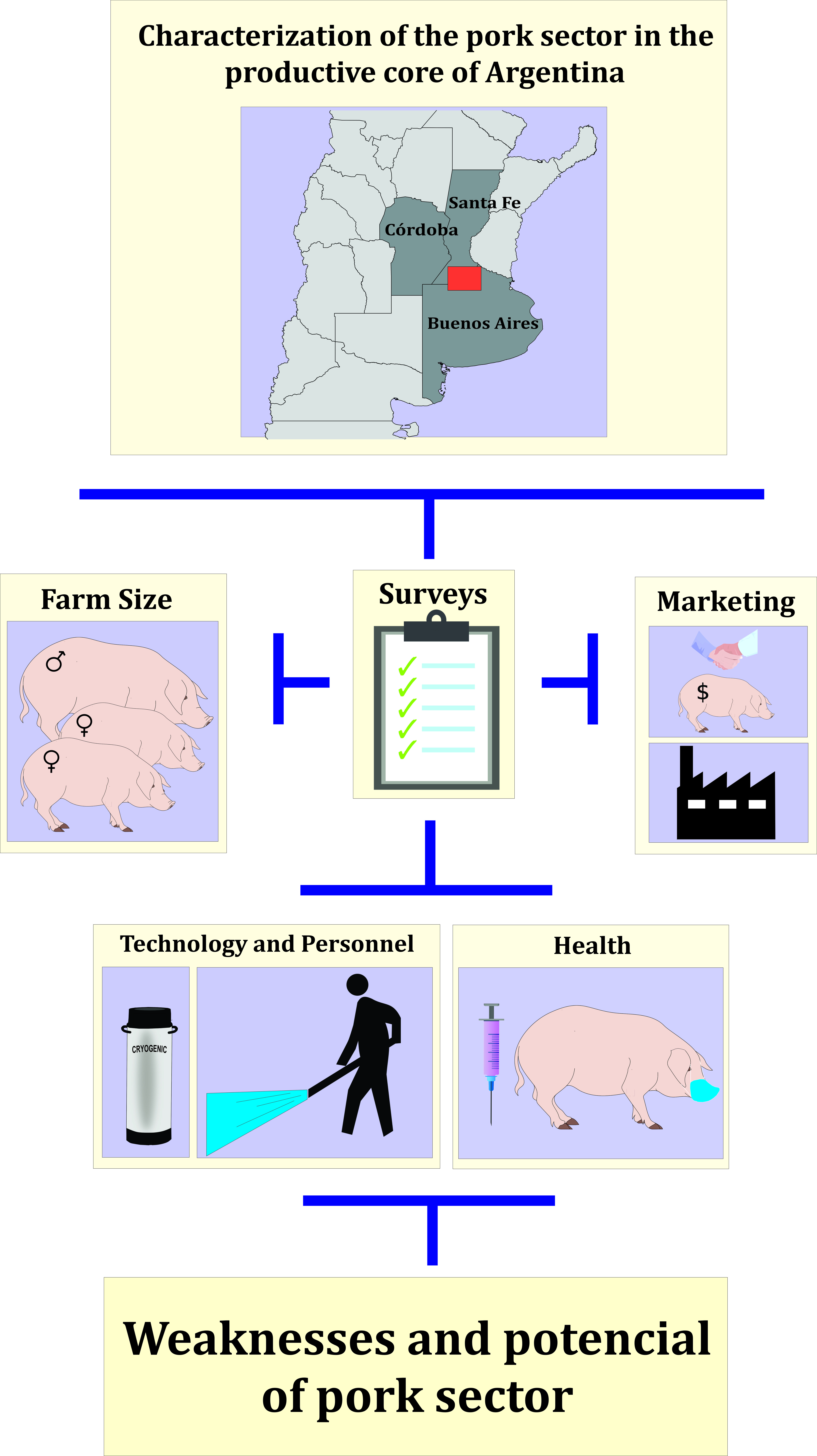Characterization of the pork sector in the productive core of Argentina: a look at small producers
Palabras clave:
producción porcina, estratos, Buenos Aires, infraestructura, sanidadResumen

Pros and cons of pork production in Argentina underscore the need to have information to empower pork producers. This study characterizes three pork production strata (Small, Medium, and Large) in north Buenos Aires using surveys (n=40). We provide information on farms, management practices, infrastructure, technology and commercial activities. We found significant differences (p-value < 0.05) between strata in the use of artificial insemination and effluent treatment (mainly through lagoons and soil application) regarding infrastructure and technology. Additionally, there was a trend towards breeding in confined systems as the size of the production increased. Furthermore, despite 72.50% of surveyed producers having reported access to professional veterinary advice, we found a significant difference (p-value = 0.0167) in access between the Small (45.45%) and Large (100%) strata. Regarding commercialization, data indicated piglet sales as the predominant activity, with pig farming serving as a supplementary source of income for most producers. These findings show the need for professional intervention in smaller-scale pig farms to overcome structural barriers and access to the production chain.
Highlights:
- The majority of surveyed pork producers (82.05%) relied on natural mating for breeding, with significantly greater access to artificial insemination in the Large stratum.
- For the first time, information is presented on effluent disposal and/or treatment processes to reduce contaminants, along with workforce size, within the study area.
- A Significant proportion of surveyed swine producers (72.50%) received veterinary advice, though there was a statistically difference between the Small and Large strata.
- Predominant proportion of producers (65%) reported primarily selling piglets, with private sales prevailing in the Small and Medium stratum.

Descargas
Publicado
Número
Sección
Licencia
Derechos de autor 2018 Revista de la Facultad de Ciencias Agrarias UNCuyo

Esta obra está bajo una licencia internacional Creative Commons Reconocimiento-NoComercial-CompartirIgual 3.0.
Aquellos autores/as que tengan publicaciones con esta revista, aceptan las Políticas Editoriales.



